These are the Sheephole Mountains in late afternoon as the sun is starting to set behind them. The detail is delicate and hard to capture with a camera. This shot gives a decent idea of what they look like, but not a perfect one.

Cats, charts, and politics

These are the Sheephole Mountains in late afternoon as the sun is starting to set behind them. The detail is delicate and hard to capture with a camera. This shot gives a decent idea of what they look like, but not a perfect one.

A couple of days ago I asked for the top current examples of systemic racism. As you might expect, the conversation in comments degenerated fast and there weren't very many candidates offered. For the record, though, here were the top four:
This is just a quick list to let everyone know what the hive mind came up with. Obviously each of them could be worth a book on its own. But that's for later.
After months of stagnation, I've made a change to our daily charts. With the exception of Argentina, which is still skyrocketing, all the other countries I cover have dropped to very low mortality rates. For that reason, I've changed the vertical scale to 0-5 so that it's easier to see just how low the mortality rate really is. As it happens, it's pretty close to one per million almost everywhere. The US is currently at 1.04 deaths per million.
Here’s the officially reported coronavirus death toll through June 15. The raw data from Johns Hopkins is here.
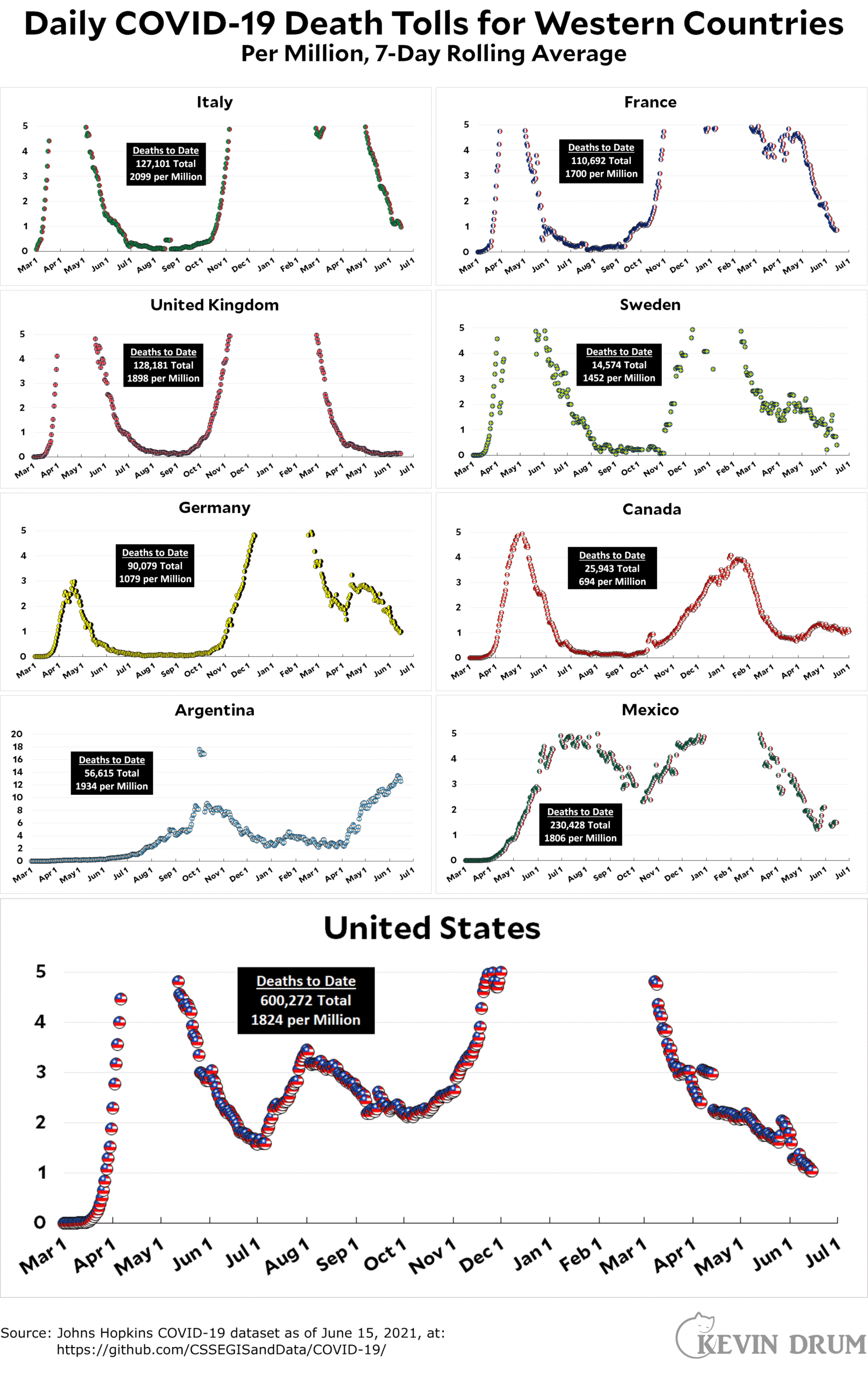
I got curious a couple of days ago about essential workers. How much more risk of COVID-19 did they face because they had to work through the pandemic instead of staying home or working remotely? Here's an analysis for California workers:
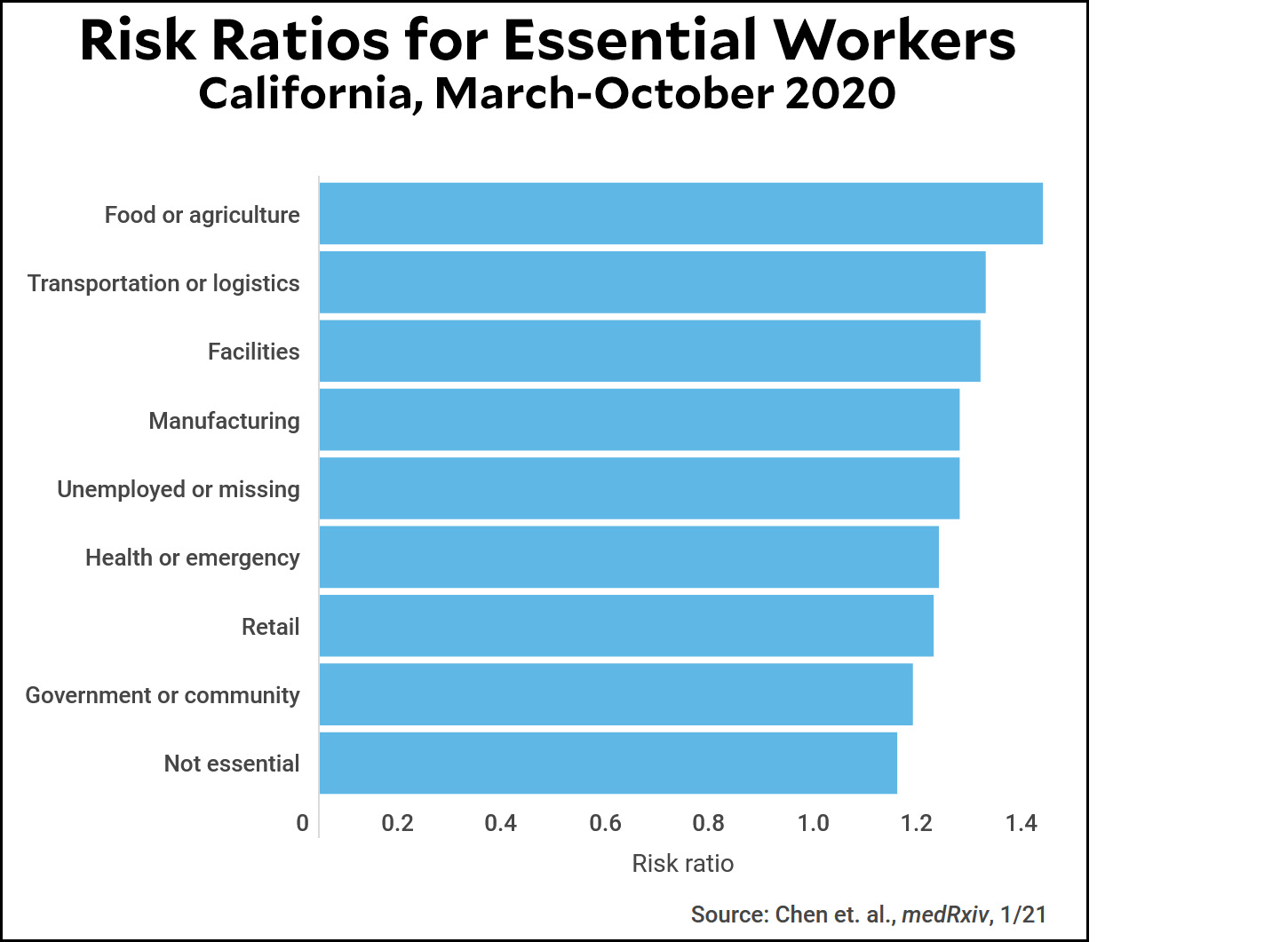
But here's a caveat from a different study of California workers:
California’s high risk workers, compared with those in non-high risk sectors, were far more likely to be immigrant . . . lived in households that were on average larger . . . were more likely to have children . . . and were twice as likely to have multiple families living under the same roof.
I wonder what these risk ratios look like if you control for all this stuff? That is, non-essential workers clock in at a risk ratio of 1.11 while transportation comes in at 1.28. But is that 0.17 difference accounted for by the controls? If so—or even if the controls account for part of the difference—it means that working didn't really add much danger. The only real exception is workers in food and agriculture, whose risk ratio is high enough that it's almost certainly still significant even with controls.
I'd sure like to see this analysis. It seems unlikely on its face that the actual act of working every day played only a small (or zero) role in raising the risk of dying from COVID-19. And yet, these raw risk ratios are mostly not really that big.
I couldn't find a study that controlled for this stuff properly, which also surprised me. Does anyone know if there's one out there?
Here's a thought. For a supposedly deadlocked political system that's only a step away from democratic collapse, we've managed to pass a fair amount of substantial legislation over the past decade:
None of these are executive actions. They are all significant measures that have passed through Congress and been signed by the president. Not so bad, really.
Hey, it's strawberry season too! Go buy some strawberries today.

For your consideration. Shot:
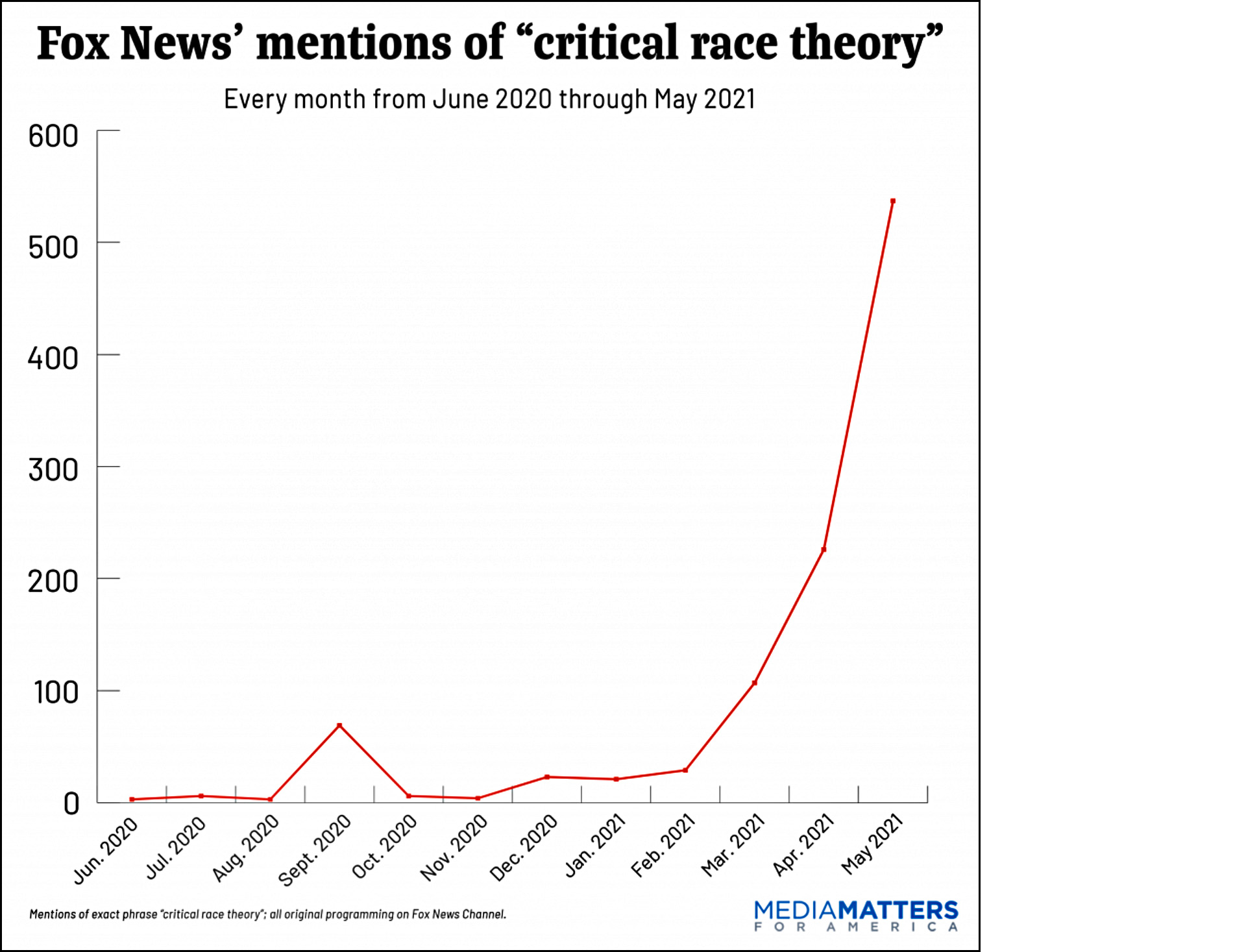
And chaser:
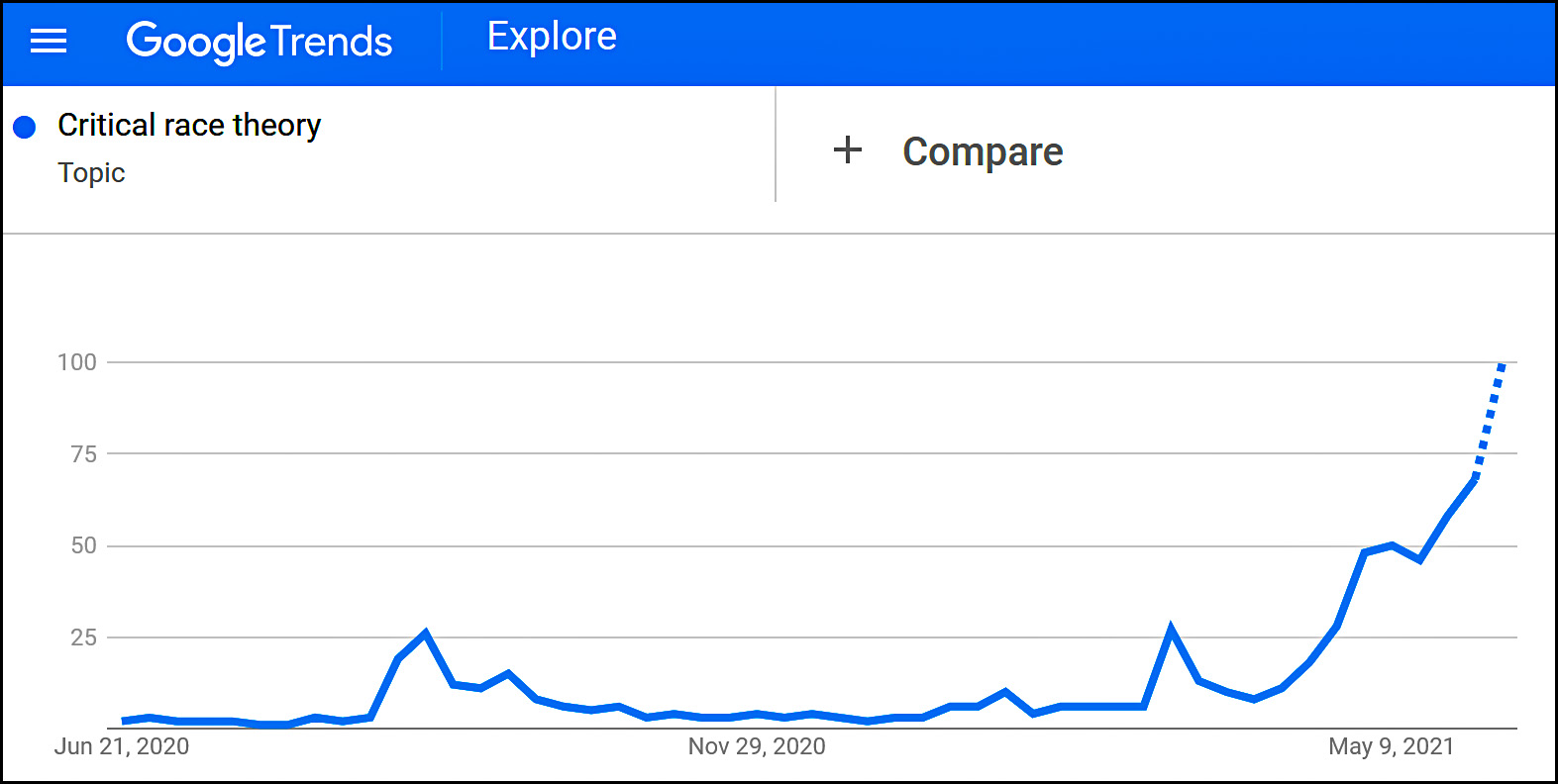
Out of nowhere, Fox News suddenly starts putting critical race theory in heavy rotation starting in March. Six weeks later, everyone else is following suit.
Among conservatives, this is nothing surprising. Fox News has built its brand since the beginning on stoking white fear of black (and brown) people. Conservatives have never objected to this—in fact, most of them won't even admit it—so it's perfectly natural that they're along for the ride.
But there are also well-meaning moderates and liberals out there who have gotten on the "let's hear them out" bandwagon. These are people who would insist that they aren't influenced by right-wing agitprop, but they are. It goes like this: Fox keeps up the noise long enough; a few Republican legislatures propose performative laws to "ban CRT"; the mainstream media takes notice; and now we're all talking about it.
But why? Are there a few schoolrooms where teachers have taken wokeness farther than they should? Sure. There are a couple of million schoolrooms in the United States and it would be shocking if there weren't a few of them doing stupid stuff. Even if that number is a minuscule 0.1%, that's 2,000 schoolrooms, more than enough to generate a couple of shocking stories per week.
But wait. How many schoolrooms are there who have taken wokeness to ridiculous levels? What's that? You don't know? And Fox News doesn't know? Then knock off the crap until you do.
As long as you're worried about this based solely on the highly orchestrated daily anecdotes of Fox News, you're a sucker just like everyone else. This is the power of Fox News and you ignore it at your peril.
The Census Bureau reports today that retail sales were down 1.3% in May. However, this is pretty meaningless:
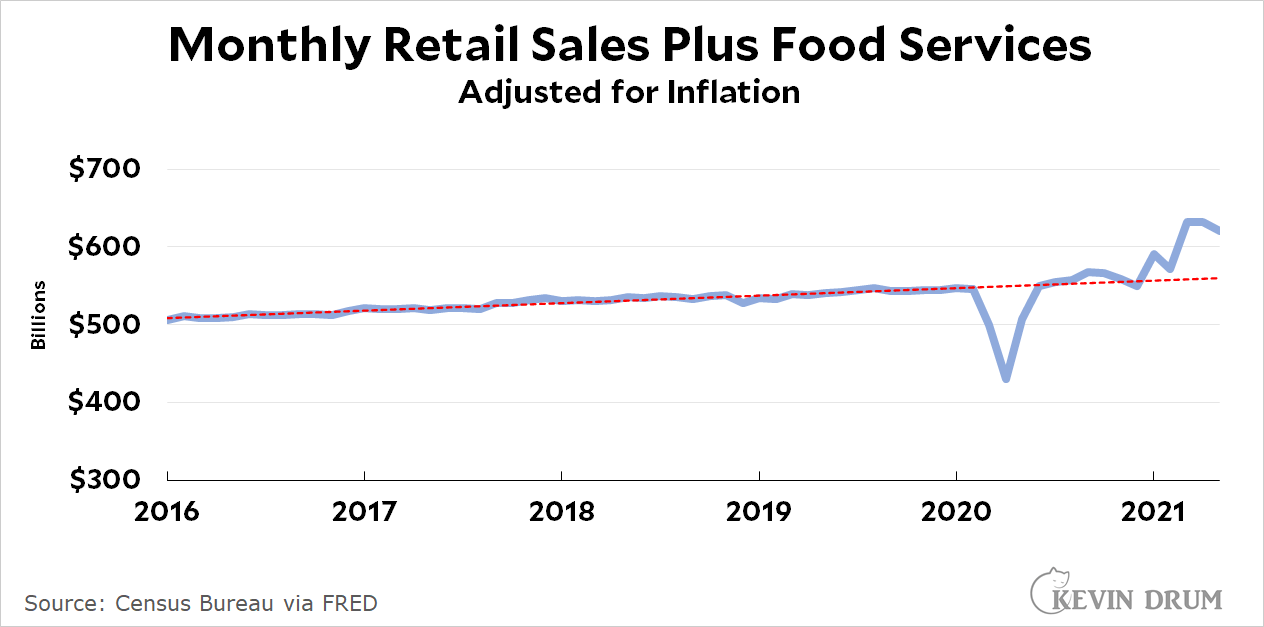
As you can see, retail sales shot up way above the old trendline in March and have stayed there for the past couple of months. There's no special reason to think that spending above trend should last forever, so a few months of noise that eventually gets us back on trend is precisely what we should expect. Everything is fine.
Here’s the officially reported coronavirus death toll through June 14. The raw data from Johns Hopkins is here.
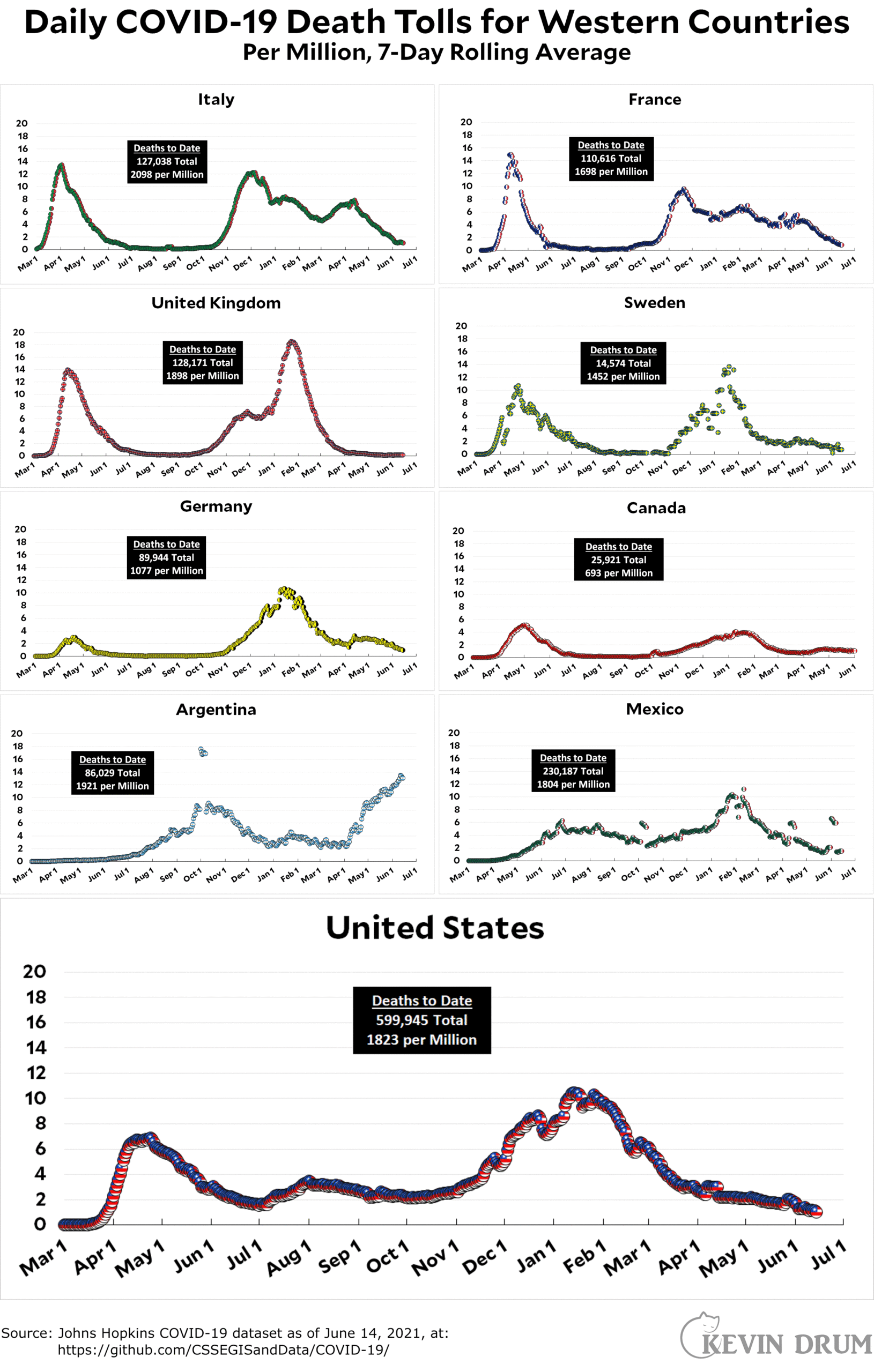
Even if Senate Republicans come up with an infrastructure bill that can get ten votes from their side of the aisle, it's almost certain that President Biden will decide he can do better using reconciliation and counting solely on Democratic votes.
So what's the most aggressive bill that will win the support of every single Senate Democrat and all but five House Democrats? Maybe a trillion dollars? More? Whatever the number, at this point it's purely a matter of what Democrats are willing to support.
We should know before very much longer.